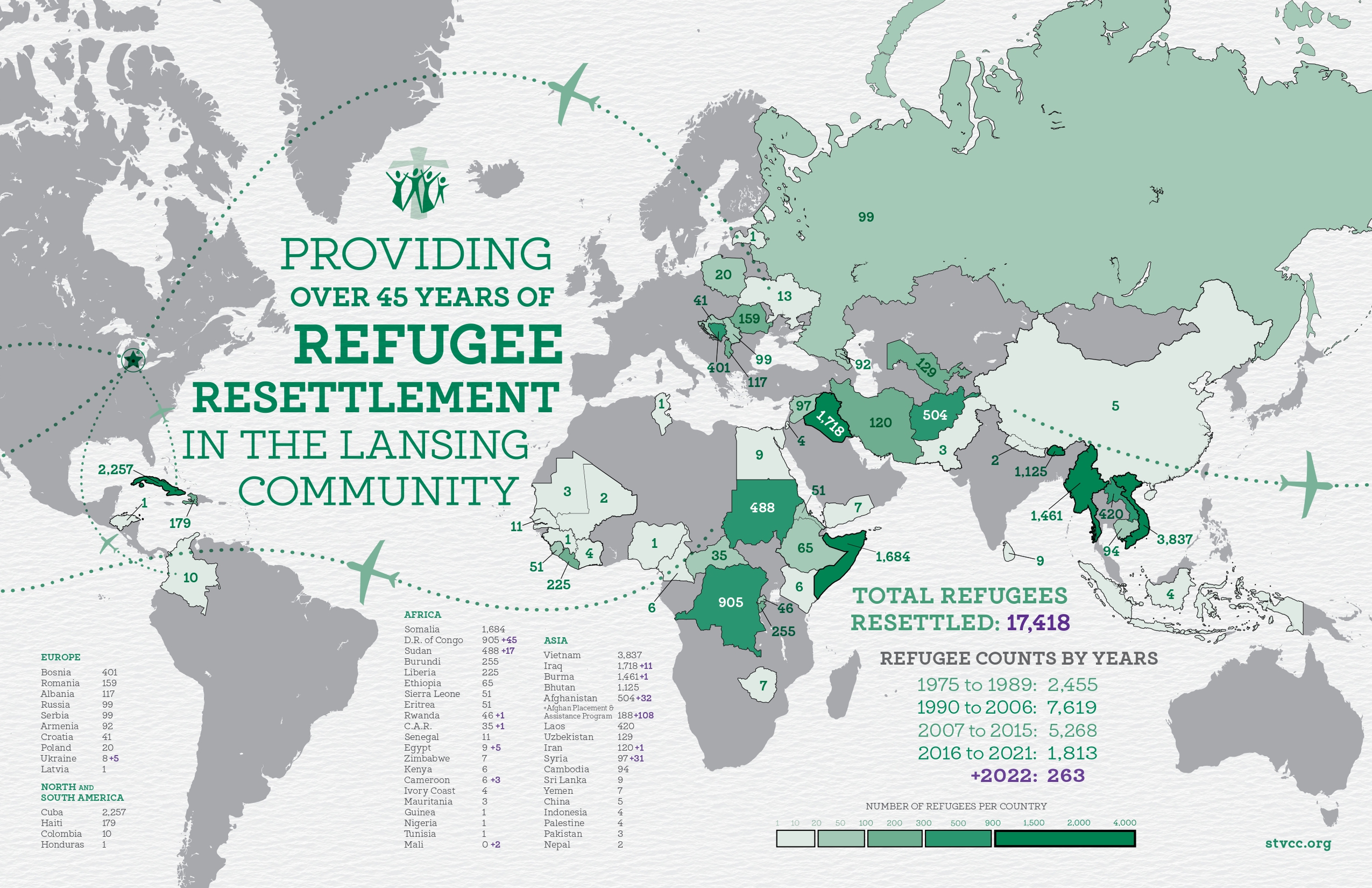
Refugees are people who “owing to a well-founded fear of being persecuted for reasons of race, religion, nationality, membership of a particular social group, or political opinion” have left their country of origin and are unable to return in fear of their safety.
Today, there are more than 65 million people in the world who have fled their homes for these reasons. Half of all refugees are children.
Many refugees begin their journey by fleeing to a neighboring country and seeking asylum, living in refugee camps as undocumented migrants. After they are identified and interviewed by the United Nations High Commissioner for Refugees (UNHCR), they can be granted refugee status and can either wait for peace to return to their home country, stay in their country of first asylum or resettle in a third country.
Less than one percent of refugees will resettle in a third country, like the United States. Resettlement in a third country is the last resort for only the most vulnerable cases. The thorough process takes an average of 18 months to complete.
How Do Refugees Resettle in the United States?
Refugees who are chosen for third country resettlement are assigned to a resettlement country and then assigned to a voluntary agency, or VOLAG. The VOLAG then finds an appropriate resettlement site for each case and assigns that case to the local refugee resettlement agency, like St. Vincent Catholic Charities.
Since we started more than 45 years ago, we have resettled more than 17,000 refugees from 60 countries. Most of the refugees that come to us have no family or connections in the United States and require help and support while they learn English and become acclimated to a new culture.
But with the help of our compassionate team, refugees who come to Lansing are able to secure jobs, go to school, own homes and businesses and become thriving parts of our community.


